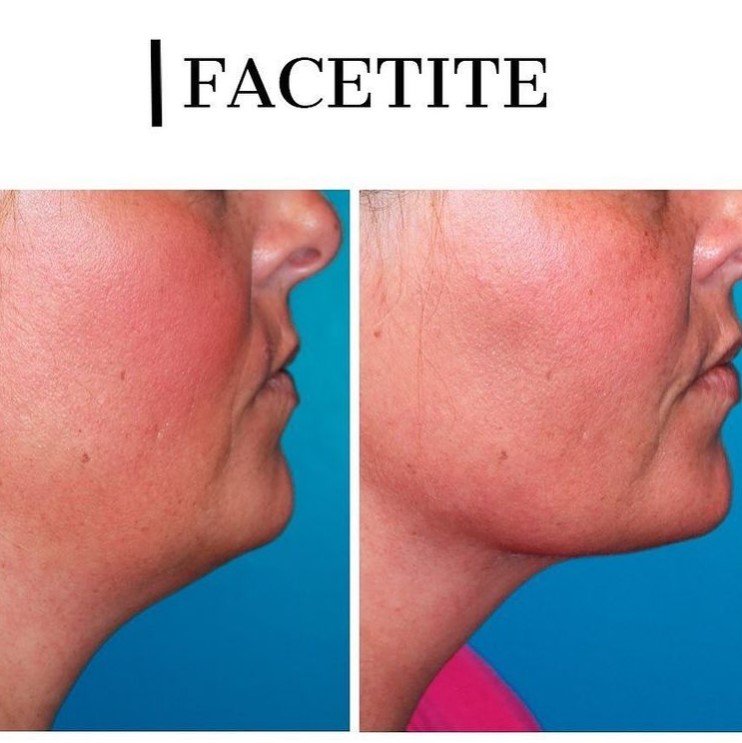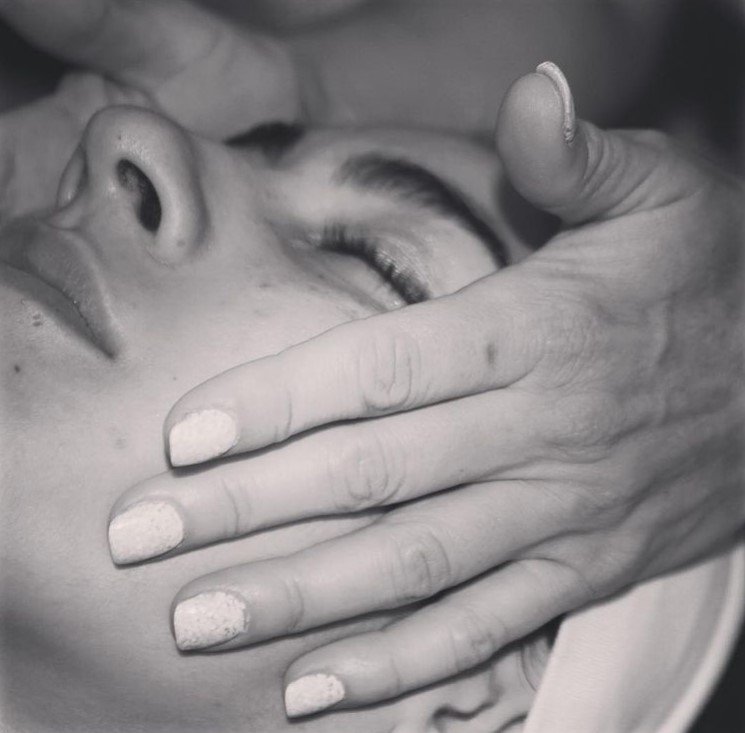People seeking a non-invasive method to tighten and contour their face and neck are increasingly interested in facetite, a relatively new cosmetic technique. While the treatment is becoming increasingly popular, one of the most frequently asked topics is how much facetite costs. In this article, I will discuss facetite, its price, and the variables that may affect the overall cost of the operation.
What Is Facetite?
Facetite is a minimally invasive cosmetic process that tightens and contours the skin of the face and neck using radiofrequency energy. A tiny handheld device is put under the skin during the process to deliver controlled radiofrequency energy to the treatment region. The skin heat by this energy, which causes it to tighten and contract and make it look younger and more contoured.
The Cost Of Facetite
Facetite is a cosmetic technique with low invasiveness that can help tighten and shape the face and neck. As a result, facetite costs can vary depending on several factors, including the provider’s experience, geographic region, and the extent of the treatment. Facetite typically costs between $3,500 and $6,500. Individuals should speak with their physician to determine the precise cost of their facetite operation.

They should also be sure to select a skilled practitioner using cutting-edge technologies. Facetite is a less expensive option than standard facelift operations for people who are good candidates, yet it may only be suitable for some.
Facetite Procedure
A typical Facetite treatment involves the following steps.
- Consultation: The first step is to consult a qualified Facetite provider to discuss your goals and determine whether you are a good candidate for the procedure.
- Anesthesia: Local anesthesia administers to numb the treatment area, ensuring you remain comfortable throughout the procedure.
- Incisions: Tiny incisions are made in the treatment area to allow for the insertion of a small cannula.
- Radiofrequency Energy: The cannula is then utilized to transmit radiofrequency radiation to the underlying tissues, assisting in skin tightening and contouring.
- Monitoring: The practitioner monitors the temperature of the treatment region during the procedure to ensure that it remains within a safe range.
- Closing Incisions: Sutures or adhesive strips are used to close the incisions once the results are obtained.
- Recovery: Individuals may feel swelling and soreness after the surgery, which usually diminishes within a few days. Patients can usually resume normal activities within a few days to a week of the treatment.
Factors That Determine Facetite Cost
The key factors that can influence the cost of a facetite procedure include.
- Geographic Location: The cost of Facetite can vary depending on where you live and the average cost of living in your area.
- Extent Treatment: The more areas needing treatment, the higher the procedure cost.
- Provider Experience: Experienced providers typically charge more for their services than those just starting.
- Technology Used: Service providers who employ cutting-edge technology may charge more than those who use outdated equipment.
- Additional Procedures: When facetite is combined with other treatments, such as liposuction or a brow lift, the cost is more than if Facetite were performed alone.
Facetite For Aging Skin: Cost And Effectiveness
Facetite is a popular beauty treatment for aging skin that can significantly enhance the look of the face and neck. Depending on the degree of therapy necessary, Facetite for aging skin has a range in cost. Facetite is a minimally invasive process that works wonders to tighten and shape drooping skin, enhance the contours of the face, and minimize wrinkles. The operation offers a quicker recovery and is often less expensive than a standard facelift.

For individuals wishing to enhance their looks and restore confidence, Facetite can offer long-lasting effects. Patients interested in Facetite for aging skin should speak with a skilled practitioner to assess the cost and efficacy of the process for their particular needs.
Facetite Aftercare
- Following the facetite procedure, treating the treated area is essential to prevent facetite complications. You should avoid touching, rubbing, or scratching the area.
- However, keep the treated area clean for at least 24 to 48 hours after the operation and avoid getting it wet. You can clean the area with water and a soft cleaner.
- Therefore, for at least two weeks after the surgery, you should avoid intense activity such as heavy lifting, exercise, or anything that can raise your blood pressure or heart rate.
- Applying ice packs to the treated area can help reduce swelling and bruising.
- Your provider may recommend wearing compression garments to help reduce swelling and promote healing.
- Attending follow-up appointments with your provider is important to ensure your recovery progresses and address any concerns or complications.
- Finally, after the recovery period, it’s essential to practice good skin care to maintain the results of the Facetite procedure. However, this can include using moisturizers, avoiding sun exposure, and eating a healthy diet.
Is Facetite A One-Time Cost?
Facetite is a one-time fee, but it is crucial to recognize that the results are not permanent. After the procedures, the aging process continues, and your skin will age naturally. While facetite can produce long-lasting results, touch-up treatments may be necessary to maintain the ideal appearance. The cost of these touch-up procedures will vary according to the extent of the treatment needed.
Before getting facetite, it is critical to address the long-term cost and maintenance of the process with your provider to verify that it is a viable option for your budget and desired objectives.
Comparing Facetite Cost With Other Procedures
- Before comparing Facetite costs with other procedures, you should research other cosmetic procedures that achieve similar results to Facetite.
- To evaluate which operation is most cheap for you, compare the beginning costs of the procedures.
- It’s also vital to consider any surgery’s long-term expenditures, including maintenance and touch-up procedures.
- Evaluate the success of each procedure, including how long the results last and how much progress is made.
- Finally, talk to a skilled provider about the appropriate technique for your needs and budget. They can give personalized advice based on your specific condition and objectives.
Factors That Affect Facetite Treatment Cost
Facetite is a minimally invasive procedure that can improve the appearance of the face by tightening and contouring the skin. The price of facetite can vary depending on several factors. Firstly, the area of the face that requires treatment will impact the cost of the procedure. Larger areas will typically cost more than smaller areas. The price will also be affected by the number of facetite sessions required to get the desired results. Some people may need one session, while others may require several. The experience and reputation of the provider performing the procedure can also impact the cost.
Highly skilled and experienced providers may charge more for their services. Furthermore, the cost of facetite can vary based on the provider’s geographic region. Charges may be higher in larger cities or more affluent locations than in rural areas. Finally, additional treatments, such as complementary procedures or touch-up treatments, can increase the overall cost of facetite.

Facetite For Men
Facetite offers a cosmetic surgery that can help men to improve the appearance of their faces. Men may consider facetite for a variety of reasons, including wrinkle reduction, tightening loose skin, and improving face features. The Facetite technique for males is comparable to that for women, with the treatment area and number of sessions needed varying depending on individual needs.
Conversely, men may require more comprehensive treatment, particularly in areas with thicker skin, such as the chin and neck. Before undergoing Facetite, you should consult a qualified clinician to determine whether the treatment is appropriate for you and discuss any potential risks and benefits.
Good Candidates For Facetite?
Individuals with mild to moderate skin laxity who want a non-invasive alternative to typical and traditional facelift procedures are good candidates for Facetite. For those who want to stay out of the recuperation and downtime associated with more intrusive procedures, Facetite is a viable alternative. Facetite may not be appropriate for everyone, therefore patients should check with their doctor to see whether they are a good candidate before undergoing the surgery.
Facetite Pros & Cons
Pros:
- Minimally invasive procedure.
- Short recovery time.
- Minimal scarring.
- Can achieve natural-looking results.
- Can perform under local anesthesia.
Cons:
- May not be suitable for individuals with severe skin laxity.
- Results may not be as dramatic as those achieved with a facelift.
- May require multiple treatment sessions.
- Possible side effects include swelling, bruising, and numbness.
- May not cover by insurance.
Facetite vs Facelift
While both facetite and facelift treatments seek to tighten and shape the face and neck, there are some important distinctions between the two. Facetite is a minimally invasive process that tightens the skin with radiofrequency radiation, whereas a facelift is a more invasive surgical process that removes excess skin and tightens the underlying muscles. Facetite requires less recovery time and poses fewer dangers than a facelift, but it is not for everyone.
Main Takeaway – Facetite Cosmetic Surgery Cost
Facetite costs can change depending on a variety of variables, such as the provider’s experience, geographic region, and the scope of the treatment. Patients recommend speaking with their provider to get the precise price of their facetite process. And to make sure they select an experienced practitioner that makes use of cutting-edge technologies.
FAQs
1. Is There Any Scarring After Facetite?
Facetite is a minimally invasive technique that usually leaves no visible scarring. This is due to the fact that the incisions made during the operation are extremely small and intentionally positioned in inconspicuous regions. Furthermore, because the treatment area is addressed directly, no substantial tissue removal is required, which can result in scarring. Scarring after Facetite is uncommon, and the majority of patients can have natural-looking outcomes with no visible sign of the operation.
2. Can Facetite Be Performed On Any Part Of The Face?
Facetite can be performed on various face and neck areas, including the forehead, cheeks, jowls, chin, and neck. The procedure is particularly effective for treating areas of the face that have begun to sag or become loose over time. However, it is critical to understand that facetite is not for everyone.
A trained medical specialist may evaluate your personal needs and help you decide if facetite is the ideal technique for you and the precise regions of your face that you want to address.
3. How Soon After Facetite Can I Wear Makeup?
It is normally advised to avoid wearing makeup for the first 48 hours after a performing Facetite operation to allow the treatment area to heal properly. Following this initial period, you can gradually add makeup to your regimen. Just be cautious not to put too much pressure on the treated region or irritate it.
Use mild, non-irritating cosmetics and avoid abrasive or harsh substances that can interfere with healing. To promote the greatest possible healing and outcomes, it is always important to adhere to the detailed aftercare recommendations made by your doctor.
4. Is Facetite Painful?
Facetite is a minimally invasive process that most individuals find to be tolerable. Local anesthesia uses to numb the treatment region during the process, which can help lessen any discomfort or agony. During the procedure, patients feel a little discomfort or a slight burning sensation. But this is usually only temporary and may treat with medicine.
Individuals may have minor swelling, bruising, or pain in the treatment area after the operation, but these side effects usually go away within a few days to a week. Facetite is generally regarded as a low-risk and rather painless surgery.